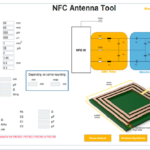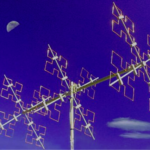The Luneburg lens is an extremely efficient reflector of radar energy based on advanced principles and fabrication techniques.
This section looks at the Luneburg lens, used to enhance radar visibility by increasing the RCS.
Q: What is a Luneburg lens?
A: There are several ways to describe it, both qualitatively and quantitatively. The Luneburg lens is a passive radar augmentation device used to increase the radar reflectivity of a target without the use of additional energy. The lens reflector is spherical in shape and can be built as a full sphere or as a hemisphere.
Q: So that’s it, nothing more?
A: There is much more. The ideal Luneburg lens is a sphere that has an index of refraction (“n”) which varies from n =1 at its surface to n=2 at the center and is embedded in a medium whose index of refraction equals that of the surface of the lens (e.g. n=1). In this ideal Luneburg lens, the index n varies smoothly from the center (at r=0) to the surface(r=R) of the lens (Figure 1), where R is the radius of the lens, based on this equation:
n = [ 2 – (r/R)2]0.5

Q: How does this compare to a conventional lens?
A: In contrast to conventional lenses, the spherical shapes of the Luneburg lens have no intrinsic direct, on-line centered axis. For this reason, any plane waves which are incident on the lens encounter an effective optical axis in the direction of those same plane waves. This yields a lens that operates similarly on plane waves irrespective of their incident direction.
With the ideal index of the refraction above, the incident plane wave is focused on a point at the opposite surface of the lens. A ray passing through the various concentric shells will bend towards normal and then focus on a point. The lens has one focal point on the sphere’s surface and the other is at infinity.
If a metal reflector is placed around the focal point, the ray gets reflected and retraces the same path. Each point on the surface of an ideal Luneburg lens is the focal point for parallel radiation incident on the opposite side. This is the principle of the Luneburg lens.
Q: What is the RCS of the Luneburg lens?
A: The radar cross-section of the lens is characterized by:
RCS = 4ϖ3R4/4.
It is inversely proportional to the square of the wavelength lambda (λ) and directly proportional to the 4th power of the radius. The radar cross-section of a Luneburg lens is several hundred times that of a metallic sphere of the same size.
Q: What does this lens look like in use?
A: It can be seen in use with two stealth aircraft, Figure 2 and Figure 3.


Q: What’s the history of the Luneburg lens?
A: The lens on a theory proposed in 1944 by Rudolf Karl Luneburg, a professor of mathematics and optics at the Dartmouth College Eye Institute. He was born in Germany, received his doctorate at Göttingen, and emigrated to the United States in 1935.
His primary work was the book “Mathematical Theory of Optics” (published by Brown University). In it, he extended the principles of mathematical “puzzles” and challenges — and their solutions — posed and in many cases solved in the 1850s by James Clerk Maxwell (yes, of Maxwell’s equations).
The final part of this article will look at the physical construction of a practical Luneburg lens.
Related EE World Content
Device Turns Flat Surface into Spherical Antenna
Lens antennas focus multiple wireless beams
Improved estimation of automotive radar signal strength
Evolving radar technology in ADAS
How many types of radar are there?
Metamaterials, mmWave antennas, 3D radar and holographic beamforming
Understanding decibels and decibel measurements
The why, where, and how of automatic gain control, Part 1
External References
The Aviation Geek Club, “How Luneburg lens radar reflectors are used to make stealth aircraft visible on radar screens”
3DFortify, “3D Printing for RF & Microwave Devices”
Fortify, “State-of-Technology Update On GRIN/Luneburg Dielectric Lenses/Antennas for Microwave/mmWave Applications”
Wikipedia, “Luneburg lens”
Rozendal Associates, “Luneburg Lenses”
RF Wireless World, “Advantages of Luneburg Lens | disadvantages of Luneburg Lens Antenna”
Mayurakshi, “Luneburg Lens”
Military Embedded Systems, “Radar cross section: The measure of stealth”
MIT Lincoln Laboratory, “Introduction to Radar Systems: Target Radar Cross Section”
RF Cafe, “Radar Cross Section (RCS)”
West Marine, “Selecting a Radar Reflector”
National Boating Safety School (Canada), “Boat Radar Reflector Requirements”
ITU, “Technical Parameters of Radar Target Enhancers”





